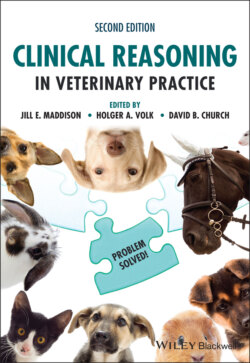Читать книгу Clinical Reasoning in Veterinary Practice - Группа авторов - Страница 34
Define the location
ОглавлениеFigure 2.5 Clinical reasoning step‐by‐step: define the location.
Define the location is the step which may or may not be needed during your problem‐based assessment. For some problems it is very important. For others, the Define the location question is addressed as part of the Define the system assessment. This will become evident in some of the case examples provided later in the book.
Example: having determined that vomiting is due to primary GI disease, where in the GI tract is the lesion located (define the location)?
In this example, by asking this question, you will select the most appropriate method either to answer the question or to move on to the next step.
For example, if you believe that your history and physical examination and other ancillary data indicate a lower small intestinal lesion, endoscopy may not be an appropriate method of visualising the area or obtaining biopsies as the scope will not reach the ileum. However, if all of the information you have suggests a gastric or duodenal lesion, endoscopy may be appropriate if available.
Other examples include the following:
Vomiting due to secondary GI disease – liver, kidney, adrenals and pancreas? (Chapter 3).Brutus is an example of secondary GI disease due to liver pathology.
Hind limb weakness is due to neurological dysfunction – is the lesion in the spinal cord (and where), peripheral nerves, muscles or brain? (Chapter 7)
Haematuria – from urethra, prostate, bladder or kidneys? (Chapter 12).Errol is an example of haematuria due to bladder pathology.
